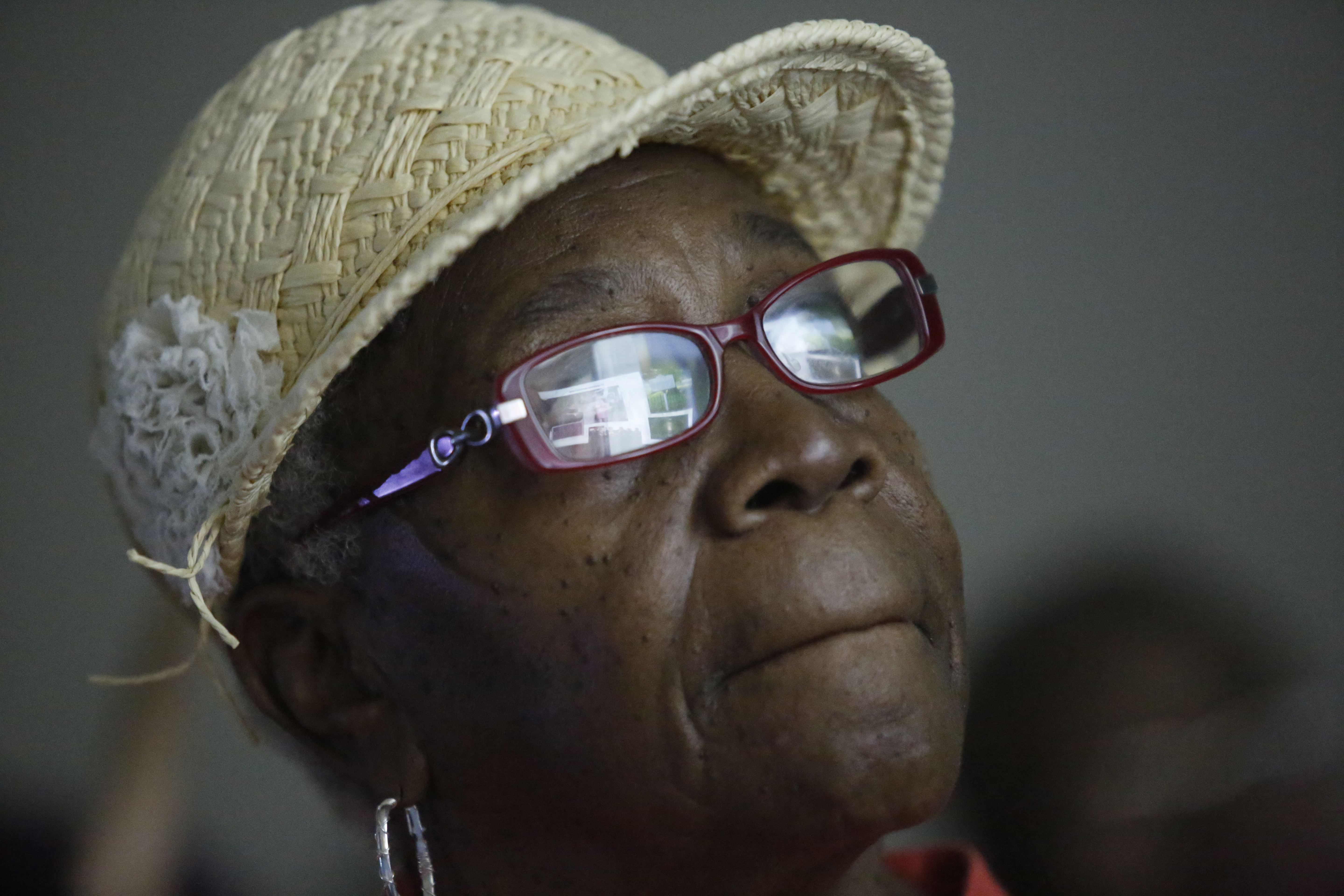 Vannice Hughley watches a slide show about National Register of Historic Places qualifications during a meeting Tuesday, Sept. 2, 2014, at Gethsemane Baptist Church in Chattanooga, Tenn., held to offer Lincoln Park residents information about the park's qualifications for NRHP and other issues surrounding the expansion of Central Avenue.
Vannice Hughley watches a slide show about National Register of Historic Places qualifications during a meeting Tuesday, Sept. 2, 2014, at Gethsemane Baptist Church in Chattanooga, Tenn., held to offer Lincoln Park residents information about the park's qualifications for NRHP and other issues surrounding the expansion of Central Avenue.Lincoln Park residents thought getting their historic park onto the National Register of Historic Places would guarantee that the proposed Central Avenue connector road wouldn't go through it, but a representative with the Tennessee Historical Commission told residents on Tuesday that isn't true.
"It's not the be-all, end-all," said Claudette Stager, assistant director for federal programs with the Tennessee Historical Commission. "If you want to stop the process" of a road touching the park, "it may not work."
Furthermore, Stager said, the preliminary assessment shows the park wouldn't qualify for the national registry because it did not retain its historic size and features.
A lot of the old structures don't exist and new buildings were put on the land, she said.
Stager spoke on the park's potential for the national registry as part of an update on the National Environmental Policy Act study of the area. The study, expected to be complete this fall, is mandated because federal funds will be spent to build the nearly $6 million connector extending Central Avenue to Amnicola Highway.
The vision for the connector is to ease traffic access to the highway and the hospital, make the University of Tennessee at Chattanooga more pedestrian-friendly and give Lincoln Park residents easier access to the Riverwalk.
The city is considering 13 to 16 routes for the road, and officials have said from the beginning that no road will go through the park. Construction is expected to start in 2016.
But the city and Lincoln Park residents differ on their definitions of the park.
The city refers to the 5.3 acres that it acquired from Erlanger Health System in a land swap. But residents are talking about the entire former park, not just the green space, but the ball fields, bathrooms and swimming pool area that existed before Erlanger began buying up lots in the community.
Some of the area outside the 5.3 acres may be taken for the road, but city officials say Mayor Andy Berke had to negotiate to get that much. Erlanger did not have to agree to the land swap.
But residents emphasize the park's historical significance to blacks in Chattanooga. It was the only park that blacks could attend during segregation. Unlike Warner Park, where blacks could only visit during the area fair, Lincoln Park had no color-based restrictions. It had its own Ferris wheel, zoo, and an Olympic-size swimming pool. Negro League Baseball players like Satchel Paige, Jackie Robinson and Willie Mays played on the ball field. It was the recreation destination for blacks throughout the Southeast.
During the meeting at Gethsemane Baptist Church, Hamilton County Attorney Rheubin Taylor questioned how the historical commission got its information to determine that Lincoln Park did not qualify for the historic registry. A 93-page preliminary report on the history of the community was compiled for the NEPA study, but no resident attending the meeting could recall anyone talking to them about the park.
Blythe Bailey, the city's transportation administrator, was hesitant about allowing residents to read the 93-page draft, but said all of their comments would be included and that resident leaders would be allowed to read the report before its final submission.
Stager also told residents that they could still pursue getting Lincoln Park on the National Register for Historic Places despite her preliminary assessment, but the process is not easy.
Contact staff writer Yolanda Putman at yputman@timesfreepress.com or 757-6431.
